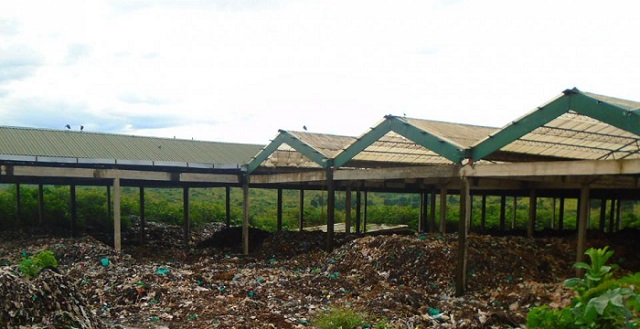
Hoima, Uganda | THE INDEPENDENT | Hoima city authorities have earmarked Shillings 700 million to revamp the defunct garbage recycling plant in Kibati cell in Hoima city East division. Built-in 2012 with funding from the World Bank and National Environment Management Authority-NEMA, the 2.5 billion Shillings garbage recycling plant has been lying idle.
Apart from aiding effective garbage management, the plant was also supposed to support agriculture by providing compost manure for use by farmers. The facility which sits on three acres of land has a capacity of processing 70 tons of garbage daily. Apparently, the plant lacks electricity and running water to support its operations. Fire gutted part of the facility in 2018 thereby affecting its operations.
Now, Sylivia Nalumaga, the Hoima city deputy mayor says that they have earmarked Shillings 700 million under the Uganda Support to Municipal Infrastructural Development-USMID program to fix all the anomalies at the garbage recycling plant so that it can become operational.
Edward Isingoma, the speaker Hoima City Council, says that there is need for the authorities to embark on massive sensitization of the city dwellers on proper garbage disposal since most of them act irresponsibly.
Residents near the dormant garbage recycling plant have for long raised the red flag arguing that they are likely to contract diseases resulting from poor waste management. Rogers Arikanjelo, a resident of Kibati cell where the facility is situated says that the lives of the communities living near the plant are at stake since the non-functional waste management plant emits a foul stench, which pollutes the entire area and makes it non-conducive for human habitation.
Hoima East division which comprises the central business area, is the biggest generator of solid waste in Hoima city. Some of the key waste generators include the abattoir, the central market, restaurants, hotels, schools, factories and other processing units in Kiryatete industrial area.
According to statistics obtained from the city authorities, solid waste generation rate was 150 to 200 tons per day in 2016. A total of 34.6 percent of the waste generated at household-level was food waste, about 26.8 percent was plastic, paper and cardboard made up about 23.9 percent while the proportion of textiles in the waste was estimated at 7.8 percent. Glass contributed to 5.0 percent, metal and electronics waste portioned to 1.7 percent and 0.2 percent respectively.
*****
URN
 The Independent Uganda: You get the Truth we Pay the Price
The Independent Uganda: You get the Truth we Pay the Price



